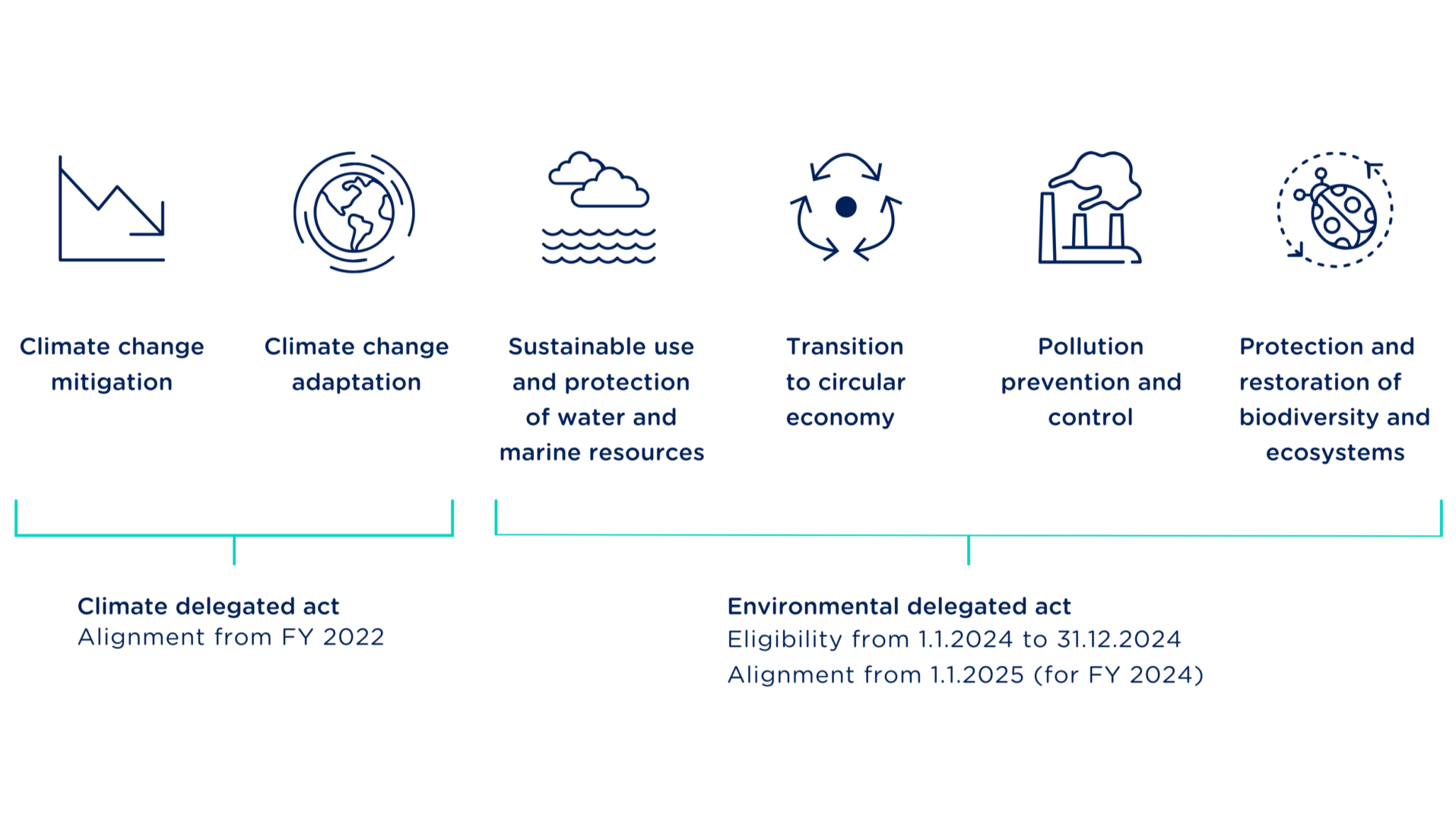
Six sets of EU Taxonomy Technical Screening Criteria – Everything You Need to Know
The Technical Screening Criteria (TSC) defined through the EU taxonomy regulation provide the basis for the classification of environmentally sustainable activities. The EU Taxonomy is a framework that categorises economic activities as environmentally sustainable. It provides a common language for companies, investors, and governments to consistently express opinions or facts about sustainable activities.
The EU Taxonomy defines activities and their corresponding technical screening criteria under six environmental objectives. The goal is to align future investments with the EU’s climate and energy targets for 2030 and the objectives of the European Green Deal. This will redirect investments into more sustainable projects and activities.
The Technical Screening Criteria are the key guiding principles for assessing the environmental impact of a company’s economic activities.
What are the Technical Screening Criteria?
The technical screening criteria are a set of rules created to guide the evaluation of companies’ economic activities under the EU Taxonomy. The TSC are developed for activities under all six environmental objectives defined under the EU Taxonomy and range from production or product-specific requirements to site-specific requirements.
The TSC can, for example, set strict performance requirements such as lifetime GHG emission limits, require compliance with legislative requirements or guidelines, or require management plans for monitoring and environmental performance for a site to be in place.
The six objectives and Technical Screening Criteria for EU Taxonomy
The EU Taxonomy is based on six environmental objectives:
- climate change mitigation
- climate change adaptation
- sustainable use and protection of water and marine resources
- transition to circular economy
- pollution prevention and control
- protection and restoration of biodiversity and ecosystems.

An economic activity can be considered sustainable under the EU Taxonomy if all the technical screening criteria defined for the activity are fulfilled. In addition, the EU Taxonomy stipulates that a company needs to adhere to a set of minimum safeguards that ensures companies follow minimum requirements regarding social performance on human rights and ethical business conduct for their activities to be considered sustainable.
EU taxonomy criteria for the companies
Substantially contributes to one or more environmental objectives.
Does Not Significantly Harm (DNSH) any other environmental objective.
Complies with minimum safeguards based on international human rights standards.
Technical Screening Criteria (TSC) that companies must comply with, constitute of the specific requirements for the first two conditions: Substantial contribution and DNSH.
- Substantial contribution criteria ensures that the activity being assessed contributes significantly to improved performance under the particular environmental objective
- Do-No-Significant-Harm criteria to ensure that improved performance for one objective does not lead to poor performance of the other environmental objectives.
The minimum safeguards require companies to have in place due diligence processes that cover human rights (including labour and consumer rights), taxation, fair competition and bribery, bribe solicitation and extortion.
What are the Technical Screening Criteria in the EU Taxonomy, and where can they be found?
The EU Taxonomy Regulation (EU 2020/852) first entered into force in the summer of 2020. It was extended with the technical screening criteria for the two first environmental objectives, climate change mitigation and climate change adaptation, and further requirements for reporting taxonomy information in December 2021. Reporting of alignment to the activities covered by the Climate Delegated Act (EU) 2021/2139 has been required since January 2023.
Technical screening criteria for the remaining environmental objectives, the Environmental Delegated Act (EU) 2023/2486, were published November 2023 and have applied since January 2024. The Environmental Delegated Act states that companies need to report eligibility to the new activities from January 2024 and alignment from January 2025.
Will there be more Technical Screening Criteria?
Over time, technical screening criteria for further activities will be gradually added to the EU taxonomy. This is seen from the addition of certain activities related to nuclear energy production and energy production from natural gas through the Complimentary Delegated Act, and the addition of activities published in November 2023.
Power of digitalisation for compliant CSRD Reporting
CSRD reporting promotes a digital approach from the beginning, rendering manual efforts time-consuming, inefficient and resource-draining. Compliance with CSRD will require electronically tagged information and submission to the ESAP via the National Contact Point from January 2028. Achieving CSRD requirements without specialised software will be increasingly difficult due to the shear amount of data and information that needs to be collected. Enter Ecobio Manager: Your solution for seamless electronic tagging and ESAP delivery.
Streamline CSRD Reporting with Ecobio Manager
Ecobio Manager is a comprehensive solution for CSRD sustainability reporting, encompassing double materiality assessment, data collection, taxonomy classification and KPI reporting, sustainability statement preparation, assurance, and streamlined delivery of electronically tagged information for publication. Designed by sustainability experts, Ecobio Manager ensures compliance with CSRD, ESRS standards, and EU Taxonomy regulation, streamlining the reporting process.



